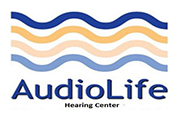
Hearing protection plays an essential role in protecting your ears against damaging noise levels, whether at work, concerts, or even while doing DIY projects at home. However, you could be left exposed to possible risks if any one of several possible factors interferes with your hearing protection’s effectiveness. In order to understand and successfully maximize the benefits of your ear protection, it’s essential to understand these issues.
Why hearing protection falters: common scenarios
Unexpected challenges will arise even when you maintain best practices. You use your earmuffs faithfully at work, wear earplugs at concerts, and avoid noisy situations whenever you can. Yet, certain variables can still disrupt your hearing protection’s effectiveness. Fortunately, you can ensure the protection of your hearing by becoming aware of these common issues and making informed adjustments.
1. Specific situations call for specific types of hearing protection
The effectiveness of hearing protection can be reduced by picking the wrong type for the given situation.
There are generally two primary categories of hearing protection:
- Earmuffs: Larger devices that cover the whole ear, resembling headphones.
- Earplugs: Small foam or rubber plugs that tuck tightly into the ear canal.
There is an ideal type for each situation:
- In settings like a construction site where noise is intermittent and you may need to frequently remove your hearing protection, earmuffs are the more effective choice.
- Earplugs are appropriate for environments with continual noise levels, like factory floors or airplane cabins.
Earmuffs are easier to handle when there is a need to frequently put on and remove your hearing protection. Disposable earplugs, on the other hand, can leave you vulnerable to hearing damage because they can be easily misplaced. Picking the correct hearing protection for your needs is the first step toward safeguarding your hearing effectively.
2. Fit and function are affected by anatomy
Some devices will fit better than others based on the size and shape of the person’s ears. An average sized ear is what standard earplugs and earmuffs are designed for, but a more personalized solution may be required for your ear’s anatomy.
- Larger ear structures: Earmuffs may be uncomfortable if your ears are larger than average causing gaps in the seal.
- Smaller ear canals: If you have tight ear canals, standard-sized earplugs may not create a proper seal, reducing their noise-blocking capabilities.
If your hearing protection doesn’t fit correctly, you could become frustrated and decide to quit using them altogether which can imperil your hearing. If you spend substantial time in loud settings, consider investing in custom-molded earplugs or professionally fitted earmuffs. These personalized solutions provide optimal comfort and effectiveness, ensuring you stay protected in any situation.
3. Failing to maintain or replace ear protection
In order to remain effective, hearing protection devices need to be properly maintained just like any other devices do. Wear and tear, improper cleaning, and neglecting replacement schedules can all jeopardize their ability to protect your ears.
The following are a number of tips on how to maintain hearing protection:
- Replace Cushions: The flexibility of earmuff cushions can decrease over time. Replace them when necessary to maintain a proper seal.
- Clean Properly: Earplugs and earmuffs come into contact with earwax and other debris, which can build up over time. Clean them regularly using manufacturer-recommended methods to ensure cleanliness without damaging the material.
- Check for Damage: Regularly inspect the elastic band on earmuffs. Their ability to effectively block noise can be compromised if the elastic band is loose or stretched.
Your hearing protection will be less effective and possibly useless if you ignore these basic maintenance duties. In order to ensure reliable and efficient performance, and to extend their lifespan, it’s essential to keep these regular maintenance schedules.
The advantage of a hearing specialist
Make an appointment with us for an assessment if you think that your hearing protection might not be doing the job. We can examine your present devices, suggest alternatives, and even provide personalized solutions tailored to your specific requirements.
Keeping your hearing safe is a commitment that lasts a lifetime and it’s important that you do it with the right tools. You can safeguard and preserve your hearing for many years by managing these common challenges.
